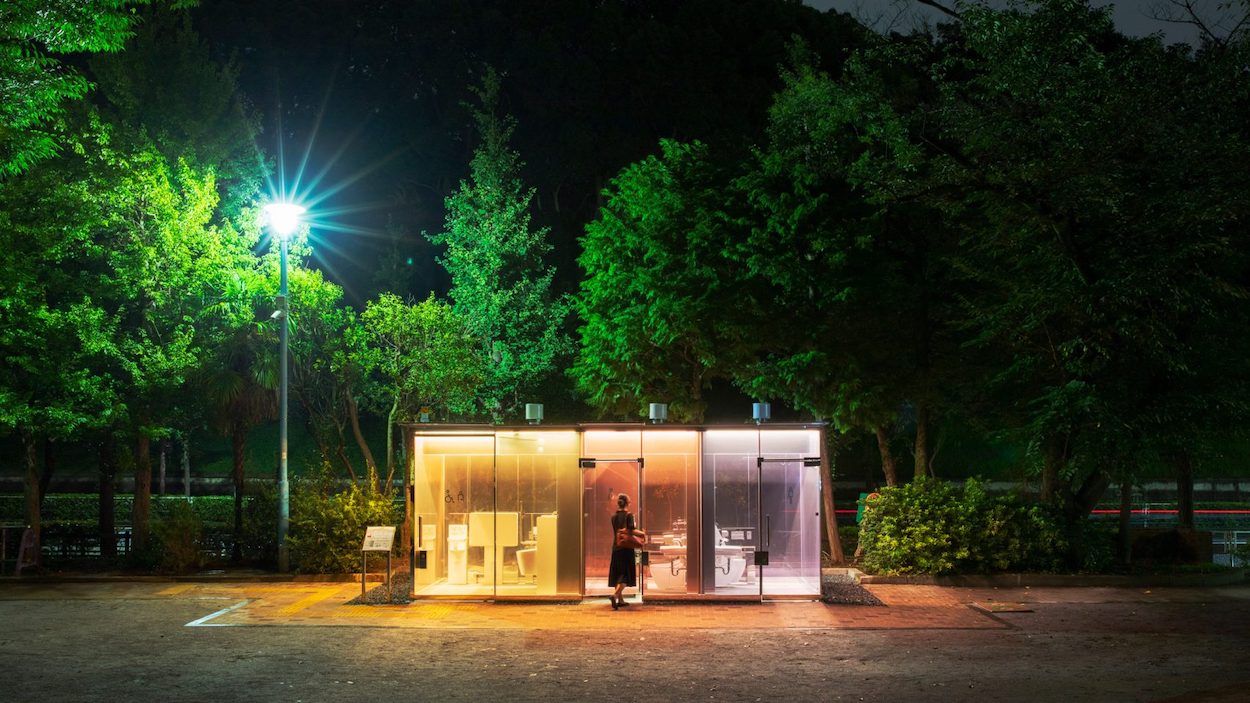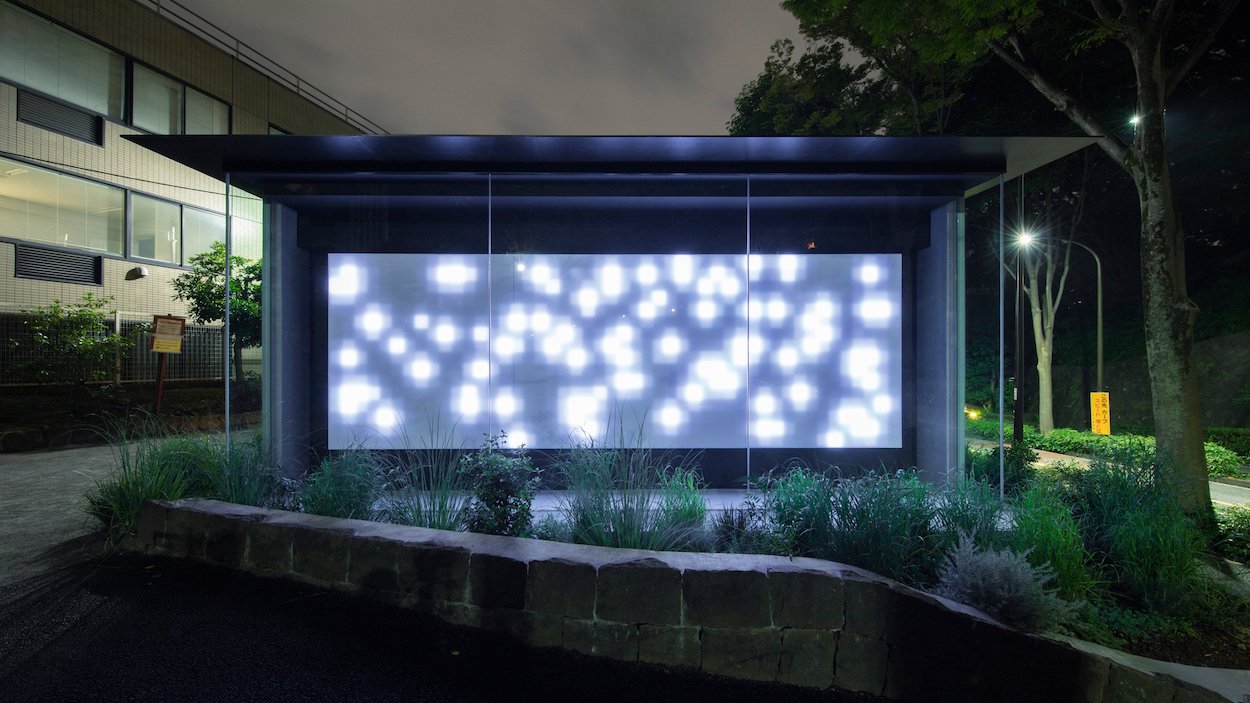On the list of unpleasant human experiences, using a public restroom has to go right near the top. That’s especially true in Japan, where denizens rarely use them because they’re often dark, dirty, smelly, and even scary. “There are two concerns with public toilets located in parks—whether they’re clean and if there’s anyone hiding inside,” says Japanese architect Shigeru Ban, who was enlisted by the Nippon Foundation to design restrooms at Haru-no-Ogawa Community Park as part of the Tokyo Toilet Project. Clad in colorful transparent glass, each cube-shaped facility becomes opaque when the doors lock, guaranteeing privacy.
The Tokyo Toilet Project enjoyed somewhat of a viral media moment when Ban’s clever proposal was unveiled in 2020. Organized in partnership with Shibuya City and Shibuya Tourism Association, the initiative is revamping lavatories across central Tokyo by commissioning homegrown heavyweights like Tadao Ando, Toyo Ito, Kengo Kuma, and Sou Fujimoto, as well as international designers like Marc Newson. In doing so, it aims to bring Japan’s high-hygiene standards, artistic sensibilities, and emphasis on omotenashi (hospitality) to communal bogs.
Ban’s luminous loo marked the first of 17 planned facilities, which are still being unveiled piecemeal. The latest, envisioned by Tomohito Ushiro, replaces a drab red-brick block in Hiroo East Park with a pared-down concrete structure that puts on a wondrous light show. Affixed to the building’s rear wall, a light panel creates a series of continuously changing patterns—7.9 billion, the same as the world’s population when he designed it—so it always appears different to passersby. Ushiro, who founded the local firm White Design, approached the concept as art first, design second. “It’s always posing questions,” he says, expressing an underlying theme of “all people are the same, in the sense they’re all different.”
All of the bathrooms are unique, reflecting the ingenuity of the country’s creative talents. Masamichi Katayama’s maze-like design consists of 15 interlocking concrete walls to monumental effect. The curves of Fumihiko Maki’s wavy, frosted-glass “squid toilet,” meanwhile, nod to Ebisu East Park’s famous octopus-shaped playground equipment. Nao Tamura’s sleek red-and-white restroom nods to origata, an ancient practice of decorative wrapping. “The bathroom is a place where we address physical needs universal to all mankind, regardless of our age, nationality, religion, skin color, or sexual identity,” Tamura says. “As we come into an era of increased awareness, our communal spaces need to evolve to accommodate our infinitely diverse needs.”
Besides making great conversation fodder, the inventive program proves what’s possible when public money is used efficiently. Whether the glorious urination stations will be maintained to Japan’s hygiene standards remains to be seen, but the Nippon Foundation plans to post each facility’s maintenance status online and deck out the cleaning staff in uniforms by Kenzo creative director Nigo, hoping the old maxim “dress for success” rings true. American cities should start taking notes.


